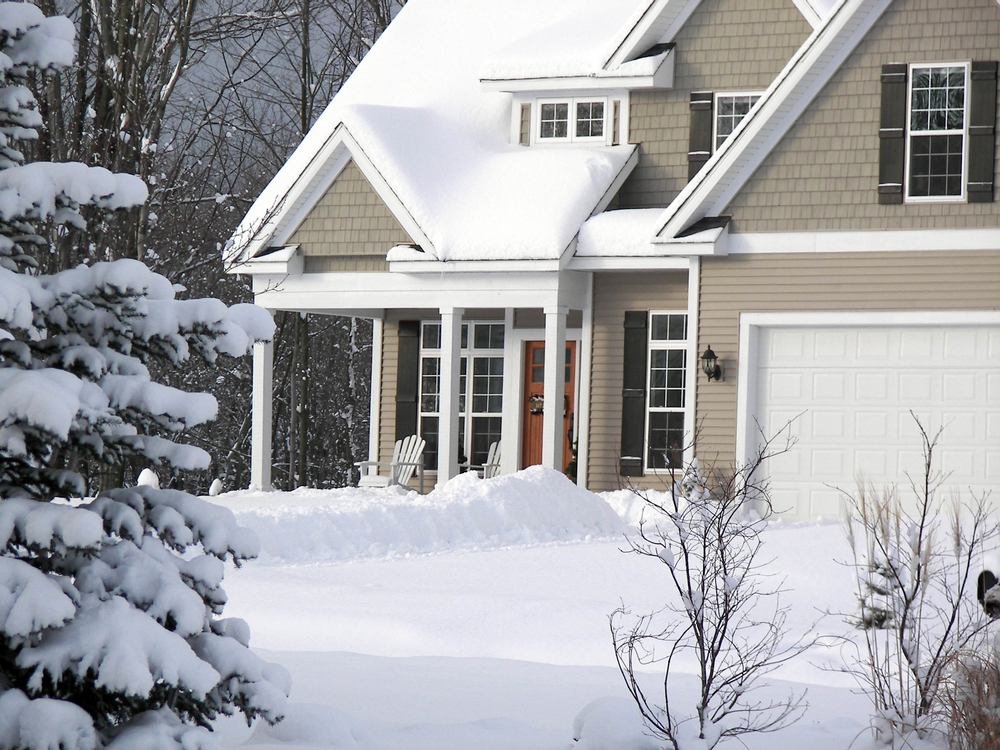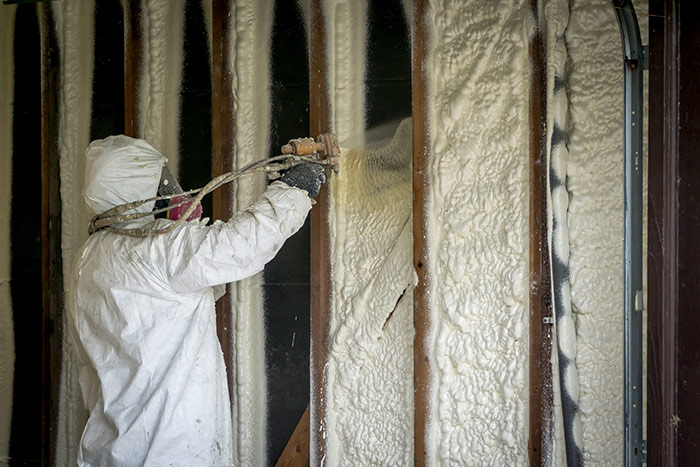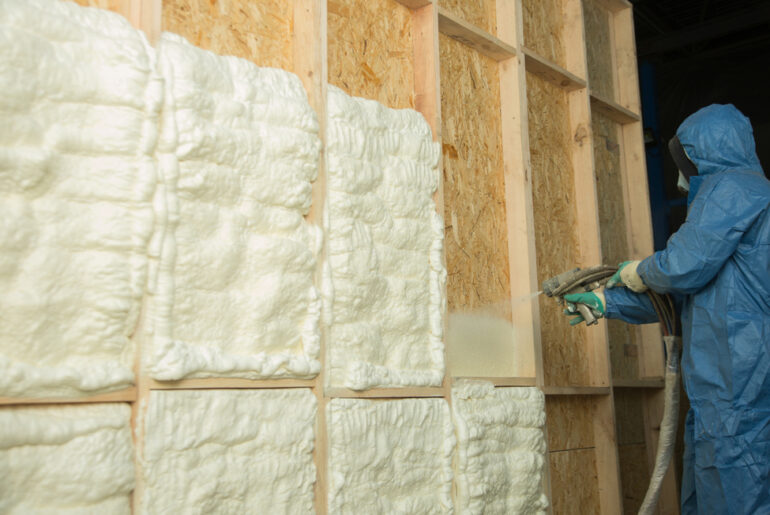Ideally, the best temperature for spray foam application is 60°–90°F (16°–32°C). If the surface has a lower temperature, it will absorb the heat from the chemical reaction inside the foam.
As a result, the foam will not adhere well to the surface and can cause the foam to rise less than expected. Plus, it will damage your foam kit’s yield since you’ll be using more material.
However you can still apply spray foam insulation in cold weather, but you need to take some precautions. Let’s learn more.
Can Spray Foam Be Applied When It’s Cold?
You can apply spray foam even when the temperature is 5 degrees Fahrenheit. However, that’s not the ideal temperature for two reasons.
First, at those temperatures, the material will not expand as much. Second, it will take longer for the foam to set, so you have to spend more time working with it.
Besides temperature, you also have to consider humidity when applying spray foam. The air humidity levels should be below 85% but not too low. The application surface should be relatively free of moisture.
However, cold air does not retain moisture well. So, if it’s cold outside, the humidity will be lower.
As evident, these conditions stack the deck against you when applying spray foam in cold weather. But you can still do it if you have no other choice.
Suppose you’re insulating a space in your home, and it’s too cold to wait until spring. In that case, you can take some precautions to improve the success of your project.
Warm the Surface
Warm up the surface before you start. You can use a heat lamp, hair dryer, or space heater. Just make sure the area is warm to the touch before you start.
You don’t have to heat the entire space. You can just focus on the area where you’ll apply the spray foam. The goal is to ensure the surface temperature is at least 40°F (4°C).
Choose a Relatively Warmer Day
Instead of applying spray foam on a wet and cold day, try to find a day when the temperature is a little warmer. A few degrees can make all the difference in how well the foam expands.
Since spray foam also takes time to cure, choose a day that’s followed by another day or two of warmer temperatures. It will give the foam enough time to set and cure properly.
Use a Smaller Nozzle
The material comes out of the nozzle more slowly when it’s cold. To get the same volume in the same amount of time as in warmer weather, you would need a larger tip to expel slowly moving foam.
A smaller nozzle will help you control the material better in windy conditions. If it’s too windy, the foam can start to drift, making it hard to control.
Let It Cure Longer
Spray foam expands quickly and then starts to set and cure. In warm weather, this process happens relatively fast.
But in cold weather, it can take up to two days for the foam to reach its full expansion. So, be patient and don’t apply any weight on the foam until it has cured.
Select the Right Foam
If you really have to apply spray foam in winter, you might want to look for denser foam. It’s best to research different manufacturers and choose the spray foam that meets your needs.
Denser foam is designed for areas that require more support, such as the roof. It’s also better at insulating against cold weather.
Are There Downsides To Applying Spray Foam In Cold Weather?
Yes, there are some downsides to applying spray foam when it’s cold outside. Spray foam requires a warm surface to adhere properly. If it’s too cold, the foam won’t stick. In addition, cold weather can make the spray foam expand unevenly, resulting in gaps and voids.
Finally, the curing process will take longer in cold weather, which means it will take longer for the foam to reach its full insulation potential. Your project’s cost may also be higher since the spray foam kit won’t work as efficiently in the cold.
What’s The Ideal Application Temperature?
Anything between 70 and 80 degrees Fahrenheit is ideal. Spray foam’s internal structure begins to change at lower temperatures, so the material must be warm enough to be pliable.
It adheres best when the surface temperature is above 60 F. As the surface temperature drops, the adhering ability of the foam decreases.
If you don’t finish the project in one go, you should store spray foam at this temperature too. If it’s kept in colder temps, the material won’t be effective in the subsequent application.
How to Apply Spray Foam Correctly When It’s Cold
Sometimes, you have no choice but to apply spray foam when it’s cold outside. If that’s the case, these tips will help.
Use Closed-Cell Foam
Open-cell spray foam expands significantly and is less rigid. That’s why it can be a menace to manage in cold weather. In addition, it can sag and drip, which means you’ll have to work quickly.
Closed-cell spray foam is denser and doesn’t expand as much. It’s also more resistant to water and moisture, making it a better option in colder weather.
Use a Drum Heater
A drum heater is a convenient way to keep your spray foam material at the ideal temperature. It’s also called a canister heater or a barrel heater.
Basically, it’s a heating element that goes around the drum, keeping the contents at a consistent temperature. Most heaters have an automatic shut-off feature, so you don’t have to worry about overheating the material.
Alternatively, you can use a band heater, which goes around the outside of the drum. It’s not as effective as a drum heater, but it will do in a pinch.
Work With a Heating Hose
While a drum heater might keep spray foam at the right temperature in the container, the material might lose its heat going from the spray hose to the nozzle. The workaround is to use a heating hose.
A heating hose is a regular spray hose with an integrated heating element. It will ensure that the material stays at the ideal temperature until it reaches the nozzle.





